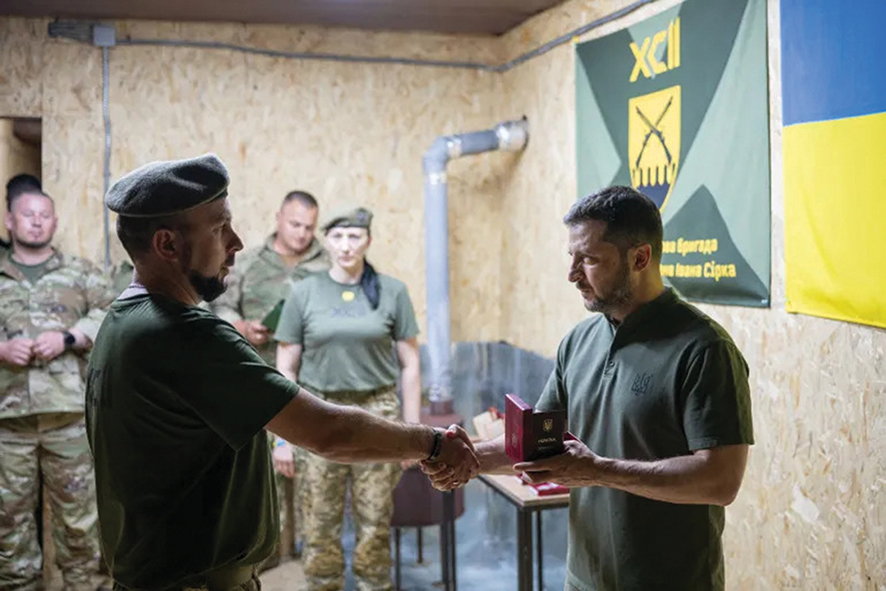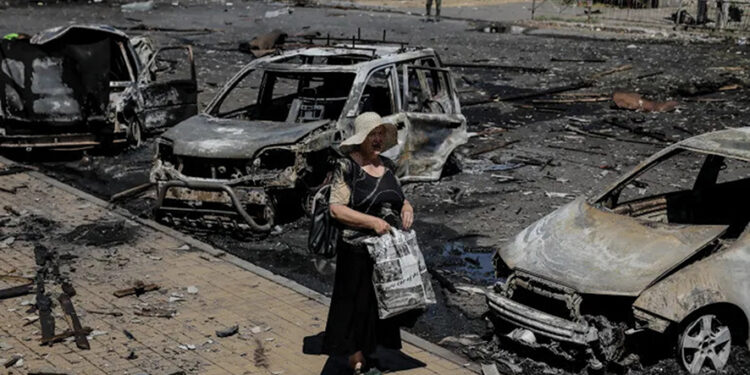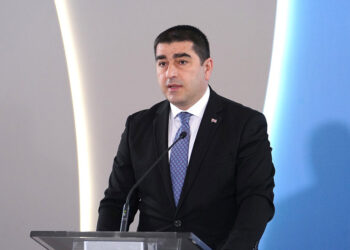As brutal battles grind on across Ukraine, diplomatic pressure is intensifying from Washington, with US President Donald Trump warning of looming sanctions against Moscow unless ceasefire talks yield tangible results by the end of the week.
Throughout these high-stakes negotiations, both sides have ramped up military efforts on the ground, resulting in deadly territorial shifts, devastating aerial attacks, and a surprise Ukrainian counteroffensive behind enemy lines.
Donald Trump’s special envoy, Steve Witkoff, met with Russian President Vladimir Putin in Moscow for a three-hour discussion this week, described by Trump as a “great progress” moment. The US administration, however, stopped short of confirming any breakthrough.
A potential face-to-face summit between Trump, Putin, and Ukrainian President Volodymyr Zelensky remains a possibility “within days,” but no location or date has been confirmed.
Meanwhile, US Secretary of State Marco Rubio said that while the Witkoff-Putin meeting provided insight into Russia’s ceasefire demands—largely related to territorial concessions—“there’s still a lot of work ahead” before such a summit can happen.
In a joint phone call with Trump and European leaders, Zelensky remarked that “Russia seems more inclined now” to engage in ceasefire talks. Still, he warned against naivety: “It’s important not to let Russia deceive either Ukraine or the US when it comes to details.”
The White House confirmed secondary sanctions will still be imposed Friday if a deal isn’t reached. These include punitive tariffs on countries buying Russian oil—such as India and China. An executive order signed Wednesday already slaps an additional 25% tariff on Indian goods.
As talks continue, Russian forces have advanced across several strategic locations, including the key stronghold of Chasiv Yar in the Donetsk region. The town, perched atop a canal and vital high ground, offers Moscow a commanding view into Ukraine’s heavily fortified eastern defenses.
Russian troops began besieging Chasiv Yar in March, shortly after taking Avdiivka. With its fall, Russia now controls a 27-km salient west of Bakhmut. “It’s a vantage point to adjust fire and tighten the noose on cities like Kramatorsk and Druzhkivka,” said military expert Vitaly Kiselyov on Soloviev Live.
Further north, in Kharkiv’s Kupiansk, Russian troops claimed to have breached city limits. Ukraine has not confirmed this, though it admits facing heavy shelling in the area.

Russian advances also crept into Dnipropetrovsk Oblast, where Moscow captured the village of Sichneve (called Yanvarskoye by Russians)—the third such claim in the region, following previous conquests of Dachnoye and Malynivka.
In a dramatic turn, Ukrainian special forces launched a deadly incursion deep into Russian-held territory in the Sumy region. Using helicopters, drones equipped with thermite, and coordinated artillery barrages, elite Ukrainian units (including Timur, Chymera, Yunger, and Siberian battalions) reportedly killed over 330 Russian troops and injured more than 550.
Kyiv’s military command called the raid a “necessary disruption” that halted a major Russian push in northern Ukraine.
This comes after continued Russian presence in Sumy Oblast, where, since February, Moscow’s forces have occupied villages such as Novenke and Basivka. Although no fresh breakthroughs were reported this week, clashes and evacuations (56,000 civilians displaced so far) persist.
Meanwhile, Ukraine’s incursions across the border into Tyotkino in Russia’s Kursk Oblast are ongoing. Ukrainian forces maintain pressure in the area, despite both countries blaming each other for ceasefire violations.
Russia continues its deadly aerial campaign. On July 31, 31 people were killed in Kyiv by a wave of jet-powered drones, marking one of the deadliest single attacks on the capital in months.
In Nikopol, southeastern Ukraine, three civilians were killed and four wounded when a Russian artillery strike hit a car belonging to state emergency services. Among the dead was an emergency worker.
Russian forces also struck a gas pumping station in Odesa, a crucial node in Ukraine’s LNG supply line supported by US and Azerbaijani imports. The strike has aggravated Ukraine’s energy crisis—its gas reserves are now at their lowest level in 12 years, with storage less than one-third full, according to the ExPro analytics firm.
In retaliation, Ukrainian forces have targeted Russian energy hubs and transport networks. While the Kremlin has confirmed disruptions, it has downplayed the extent of the damage.
Kyiv also released footage of deep-strike drone attacks on Russian rail depots believed to be carrying military supplies toward the Donbas front.
Ukraine received a fresh boost in military support this week, as the US approved over $200 million in new arms deals funded by international partners. The packages will support howitzer maintenance and logistics chains. Defense Minister Denys Shmyhal expressed gratitude to Washington on X.
In a gesture toward reform, Ukraine has appointed Oleksandr Tsyvinsky—a well-known anti-graft investigator—as the new head of the Economic Security Bureau. After delays due to concerns over his family’s Russian connections, Prime Minister Yulia Svyrydenko confirmed the appointment and noted that Tsyvinsky passed a polygraph test. EU Enlargement Commissioner Marta Kos called the move “a crucial reform strongly encouraged by the EU.”
Zelensky also visited troops in Sumy region this week, reaffirming Ukraine’s defensive resolve on the northern front.
As the Trump-imposed ceasefire deadline looms, hopes for peace remain fragile. The battlefield momentum seems to favor Russia in the east, but Ukraine’s bold counterattacks and Western support suggest this war is far from frozen. Even if Trump and Putin do meet next week, any real path toward ceasefire will require navigating the complex terrain of land, trust, and truth.
Compiled by Ana Dumbadze














